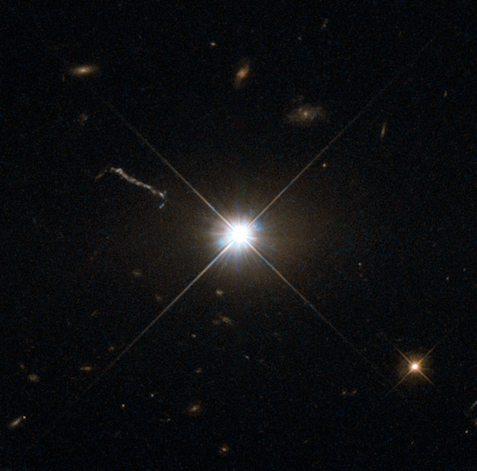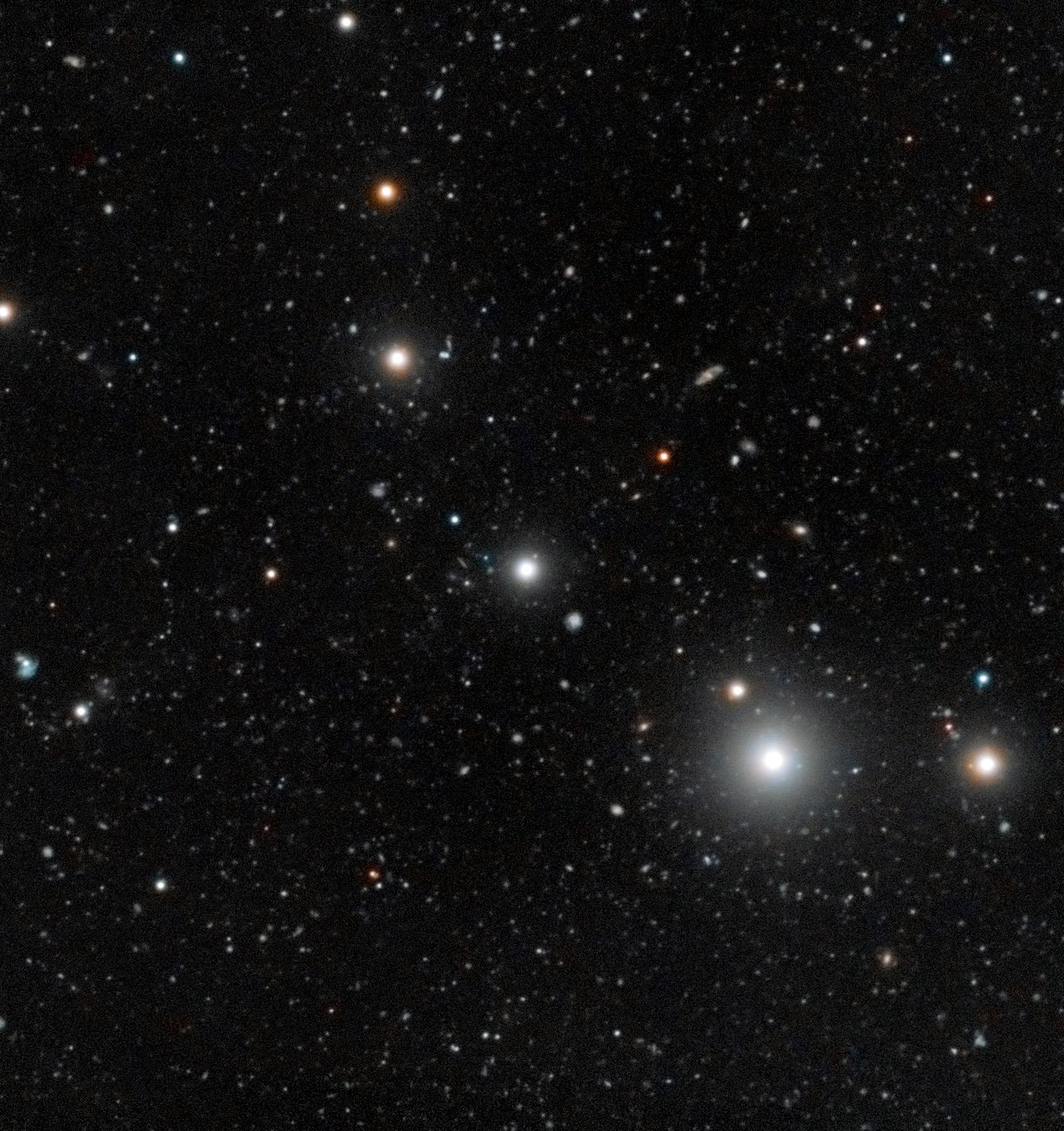A dark galaxy is a hypothesized galaxy with no, or very few, stars. They received their name because they have no visible stars, but may be detectable if they contain significant amounts of gas. Astronomers have long theorized the existence of dark galaxies, but there are no confirmed examples to date.
Dark galaxies are composed of dark matter. Furthermore, dark galaxies are theoretically composed of hydrogen and dust.[9] Some scientists support the idea that dark galaxies may contain stars. Yet the exact composition of dark galaxies is unknown because there is no conclusive way to spot them so far. However, astronomers estimate that the mass of the gas in these galaxies is approximately 1 billion times that of the Sun.
The actual size of dark galaxies is unknown because they cannot be observed with normal telescopes. There have been various estimations, ranging from double the size of the Milky Way to the size of a small quasar.
Dark galaxies are distinct from intergalactic gas clouds caused by galactic tidal interactions, since these gas clouds do not contain dark matter, so they do not technically qualify as galaxies. Distinguishing between intergalactic gas clouds and galaxies is difficult; most candidate dark galaxies turn out to be tidal gas clouds.
The best candidate dark galaxies to date include HI1225+01, AGC229385, and numerous gas clouds detected in studies of quasars.
On August 25, 2016, astronomers reported that Dragonfly 44, an ultra diffuse galaxy (UDG) with the mass of the Milky Way galaxy, but with nearly no discernable stars or galactic structure, is made almost entirely of dark matter.
Large surveys with sensitive, but low resolution radio telescopes look for 21 cm emission from atomic hydrogen in galaxies. These surveys are then matched to optical surveys to identify any objects with no optical counterpart, i.e. sources with no stars.
Another way astronomers search for dark galaxies is to look for hydrogen absorption lines in the spectra of background quasars. This technique has revealed many intergalactic clouds of hydrogen, but following up candidate dark galaxies is difficult, since these sources tend to be too far away, and are often optically drowned out by the bright light from the quasar.
n 2005, astronomers found gas cloud VIRGOHI21 and attempted to determine what it was and why it caused such a gravitational pull on galaxy NGC 4254. After years of running out of other explanations, some have concluded that VIRGOHI21 is a dark galaxy, due to the massive effect it had on NGC 4254. Continue reading
Mysterious Dark Galaxy Emits No Visible Light, Scientists Say Science Alert - February 11, 2023
Galaxies come in many different shapes and sizes, but the basic ingredients seem fairly consistent. There's usually a big black hole at the center, a bunch of stars and gas, and a generous serving of dark matter that helps glue the whole thing together. While dark matter is, well, dark, the stars, gas, and swirling core of heated material stand out with the radiant beauty of a city in the night. However, one newly discovered dwarf galaxy located a mere 94 million light-years away is defying expectations. It's named FAST J0139+4328, and it's not emitting any optical light. In fact, it's barely emitting any light at all. FAST J0139+4328 appears to be what is known as a dark galaxy. Aside from a small smattering of stars, the galaxy seems to be made up almost entirely of dark matter.
Shedding light on dark galaxies Astronomy.com - May 23, 2018

An undeniably important phase in a galaxy’s life is when it starts to birth hot new stars and illuminate the night sky. But for decades, researchers have struggled to figure out exactly how these stars are born from the gas that lingers between galaxies, known as the intergalactic medium. It's been theorized that there’s an early stage in galaxy formation where hot gas accumulates substantially, but stars haven’t yet started forming. This has been referred to as a 'dark phase,' and just like its name, its lack of starlight makes it near impossible to observe. But recently, a group of researchers has identified six 'dark galaxy' candidates, which could close a crucial evolutionary gap in galaxy formation.
Dark Galaxies of the Early Universe Spotted for the First Time ESO - July 11, 2012

For the first time, dark galaxies - an early phase of galaxy formation, predicted by theory but unobserved until now - may have been spotted. These objects are essentially gas-rich galaxies without stars. Using ESO’s Very Large Telescope, an international team thinks they have detected these elusive objects by observing them glowing as they are illuminated by a quasar.
Dark galaxies are small, gas-rich galaxies in the early Universe that are very inefficient at forming stars. They are predicted by theories of galaxy formation and are thought to be the building blocks of today’s bright, star-filled galaxies. Astronomers think that they may have fed large galaxies with much of the gas that later formed into the stars that exist today.
Because they are essentially devoid of stars, these dark galaxies don’t emit much light, making them very hard to detect. For years astronomers have been trying to develop new techniques that could confirm the existence of these galaxies. Small absorption dips in the spectra of background sources of light have hinted at their existence. However, this new study marks the first time that such objects have been seen directly.